Huawei HarmonyOS 3.1 preparing for beta test
HarmonyOS 3 changelog for Huawei Watch 3 [Global]
Huawei Mate 40 series gets Turbo Charge mode
Breaking: Global Huawei Watch 3 began receiving HarmonyOS 3
Huawei Watch GT 3 HarmonyOS 3 beta delayed to next year
Huawei Watch 4 series should launch in the first quarter
Huawei, Is there any chance of EMUI 13.1?
Huawei Mate X3 launch postponed, P60 booked for the first quarter
Which non Google apps Huawei phone you purchased in 2022?
Huawei Pocket S flip phone’s 512GB version enters sale
Huawei Nova Y90 gets December 2022 update
Huawei Mate 40 series gets Turbo Charge mode
Huawei Nova 5T gets 2022’s last EMUI update
Huawei P50 Pocket gets December 2022 EMUI update [Global]
Breaking: Global Huawei Watch 3 began receiving HarmonyOS 3
Download the latest Google Play Store APK [33.6.13]
Huawei Petal Maps 3.2.0.200 brings new features
Download Huawei AppGallery App (12.7.1.300)
Google Play Store 33.6.13 is up in stock
Get the latest My Huawei app [12.1.10.300]
Huawei MateBook 14s Intel i9 sale begins
Huawei MateBook D14 SE notebook gets 16GB RAM version
Huawei MatePad SE and Pro 12.6 gets new memory version to Malaysia
Huawei MatePad Pro 10.8 gets November 2022 patch
Huawei is the only PC maker to make growth in Q3 2022 in China
HarmonyOS 3 changelog for Huawei Watch 3 [Global]
Latest Huawei tech could detect Lung infection using SpO2
Check Huawei Watch GT 2 owners’ feedback on user experience in 2022
Huawei Band 4 with SpO2 opens sale at lowest price
Huawei launches ‘Year of the Rabbit’ FreeBuds earphones engraving service
Published
on
By
Huawei has launched Celia Keyboard for its smartphone and now added enter to send a message for social messaging apps including WeChat and QQ in China.
According to the information, Huawei Celia Keyboard for tap to enter to send a message feature comes with app version 1.0.19.103. Since, these apps aren’t available in the global market, we may not see it rolling out.
After this update, the Celia Keyboard will enable this feature of WeChat and QQ to press the enter key to send messages. Complaints and reporting portals for quotations, emoticons, skins, have been added. Newly added pinyin input during the upward sliding number without interrupting the input; associative word engine optimization, etc.
Below you can check the complete changelog:
- Add WeChat, QQ Enter key to send messages feature
- Added complaint reporting portals for quotations, emoticons, skins, etc. in the mall
- During the new Sogou input process, sliding up the number does not interrupt the input
- Associative word engine optimization
- Bug fixes
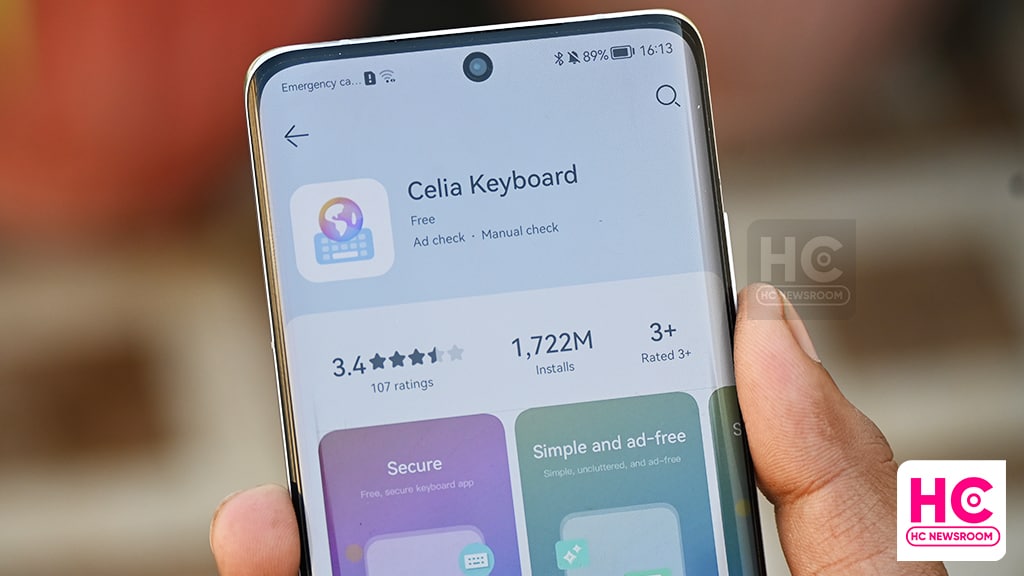
Huawei and Qualcomm leads Wi-Fi 6 innovation
Huawei announce winners of Next Image Awards 2022
Most of Deng Li’s smartphones are from the Huawei ecosystem and his first Huawei phone was Ascend Mate 2 (4G). As a tech enthusiast, he keeps exploring new technologies and inspects them closely. Apart from the technology world, he takes care of his garden.
Huawei will maintain strong R&D division
Huawei Watch 4 series should launch in the first quarter
BYD Tang SUV gets new Huawei HiCar features with OTA update
Published
on
By
Huawei has a strong Research and Development division and the company is innovating new technologies to maintain the growth of the R&D industry.
During a recent Technology Ecosystem Conference in China, organized by China Telecom, Xu Zhijun, the rotating chairman of Huawei, delivered a speech themed “Promoting the Re-Upgrade of Broadband Consumption”.
Xu Zhijun said: Adhere to the principle of pressured investment, focus on the communication and cloud computing industries, maintain strong investment in R&D and innovation, and continue to promote the development of the digital technology industry.
R&D and innovation have always been the lifeline of a technology company for a long time. Maintaining R&D and innovation capabilities can also promote the company to become bigger and stronger. Huawei has insisted on investing heavily in R&D and innovation over the years. It is what a company, what a real tech company should do.
Editor’s pick – Huawei fiber-optic broadband is upgraded to 10 gigabit 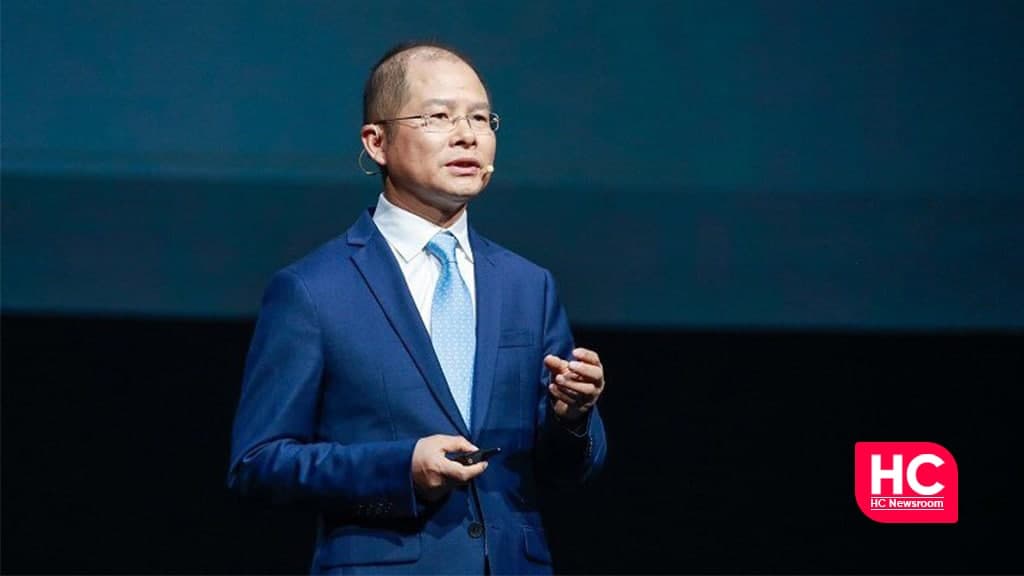
Xu also assured everyone that Huawei will also maintain improvements in its R&D to further support the technological advancements of the world.
Looking back to the data, Huawei’s R&D expenditure was 142.7 billion yuan ($21.28 billion) in 2021, which takes about 22.4 percent of its annual revenue. Despite being attacked by the U.S., Huawei didn’t stop launching new devices and the company is gradually moving forward with positive energy.
Also, check:
EU ranks Huawei in the top 5 R&D investors scoreboard 2022
Published
on
By
Huawei Rotating Chairman, Xu Zhijun announced that the bandwidth of fiber to the home (FTTH) broadband has been upgraded to from gigabit to 10 Gigabit. As of now, the operators are working to upgrade their broadband networks to 10G passive optical networks (PON). So, more users can enjoy a gigabit ultra-broadband experience.
By the end of November 2022, the total gigabit users in China surpassed 87 million, which accounts for over 16 percent of the total number of broadband users. Simultaneously, 50G PON will be released in 2023.
According to the ongoing schedule, FTTR penetration is expected to reach 8 percent in 2025 and 31 percent in 2030. Huawei’s chief told that the company could take a big step, which is to try and bring this new user experience to each family. 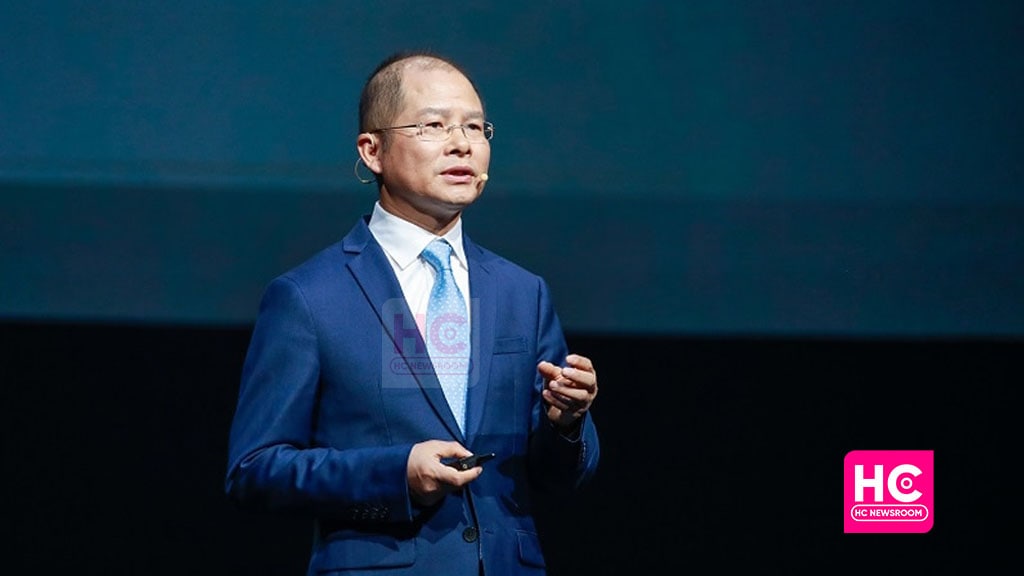
The head of Huawei said that the new applications bring high requirements through output and delay, while the popularity of new applications will gradually increase.
At the 2022 Mobile World Congress (MWC), Huawei launched innovative gigabit fiber-to-the-room (FTTR) solutions. The solutions extend fibers to every room and aim to build an all-optical base for smart homes and digital enterprises, enabling gigabit Wi-Fi 6 coverage in each room and creating a brand-new digital life experience.
Published
on
By
Over the past month, global media has been speculating new Huawei chipset manufacturing patents and there’s a lot that may be coming this year, such as 12nm and 14nm chipsets.
According to the inputs coming from a well-known Weibo tipster, there are preparations going on for the first mass production of 12nm and 14nm chipsets.
Looking at the fact that the tipster (most of the time) provides inputs about Huawei, these 12 nm and 14nm chipsets may belong to no other than the Chinese tech makers.
For those who don’t know, nm stands for nanometer, a unit of measure for length. 1nm is equal to 0.000000001 meters—which is absolutely minute. In a CPU, nm is used to measure the size of the transistors that make up a processor.
Editor’s pick – 2022, a tough year for Huawei smartphones but also crucial
Also, Huawei has the most advanced chipset designing technologies, thanks to its years of research via the HiSilicon subsidiary.
Yes, the chipset development node is not advanced but it could be used for wearable devices. Interestingly, the tipster revealed that a certain set of these chips is already in use internally. 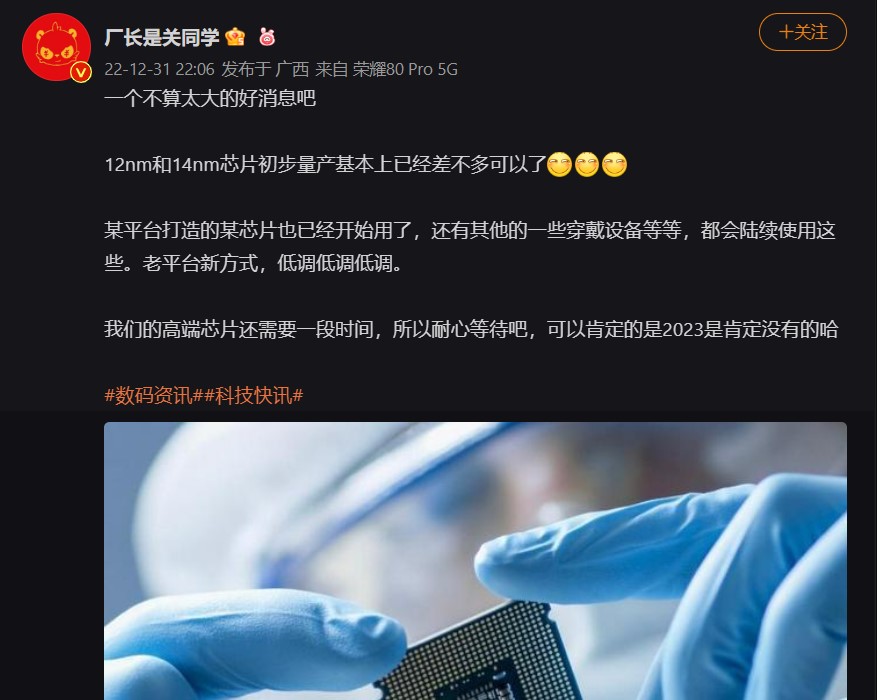
Why?
The key to moving with low-tech design is to be efficient and move gradually in the semiconductor industry. Although, all of the designs are mastered by HiSilicon but wearables and similar platforms would be nice to start with.
Advanced chip:
That’s not it, the work is underway on the advanced chipset and we’ll have to wait until 2024 to match the mobile application processor node.
The tipster comments that an advanced chipset won’t appear this year for sure, which makes sense.
Exciting news:
This is a piece of exciting news and whether it’s for Huawei or for the Chinese industry, Huawei will get benefit from the outcome.
Because Huawei has one of the biggest smart wearable portfolios and there are a lot of devices that could utilize this type of semiconductor. 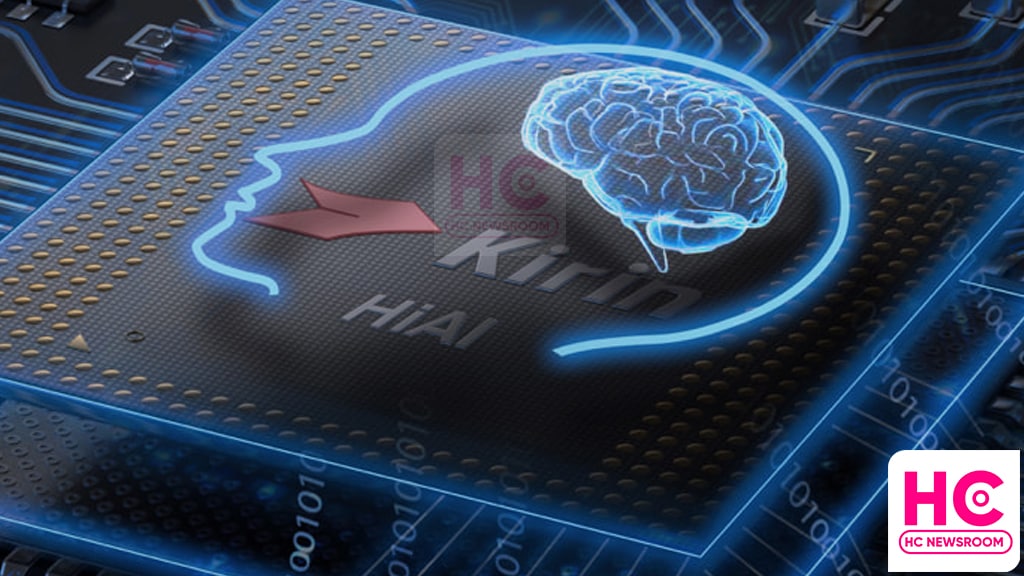
Kirin:
For now, Huawei’s Kirin chip inventory is exhausted and the company is solely relying on Qualcomm for a new chip for smartphones.
This situation originated after the U.S. ban and since then, Huawei can’t print new chip via TSMC or similar chip production companies.
But Huawei is reshaping its supply chain and trying to bring new partners together to resolve the current in-home chip issues.
Copyright © 2022 Huaweicentral.com